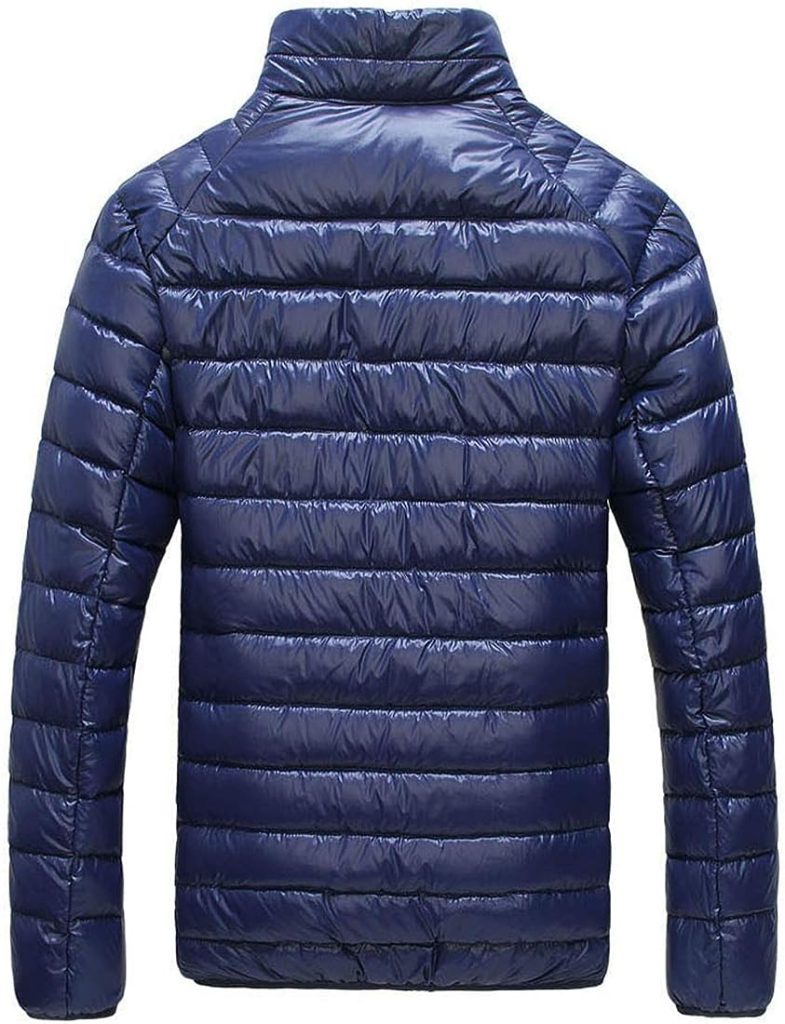 When it comes to men’s down jackets, one of the key factors that contribute to their warmth and functionality is the design of the baffles. Baffles are the compartments that hold the down insulation in place, preventing it from shifting and clumping. The choice of baffle design can greatly impact the jacket’s performance, insulation distribution, and overall aesthetic appeal. In this article, we will explore different baffle designs commonly found in men’s down jackets and discuss their advantages and disadvantages.
When it comes to men’s down jackets, one of the key factors that contribute to their warmth and functionality is the design of the baffles. Baffles are the compartments that hold the down insulation in place, preventing it from shifting and clumping. The choice of baffle design can greatly impact the jacket’s performance, insulation distribution, and overall aesthetic appeal. In this article, we will explore different baffle designs commonly found in men’s down jackets and discuss their advantages and disadvantages.
Box Baffles
Box baffle designs are characterized by square or rectangular compartments that create a grid-like pattern across the jacket. These baffles are stitched at regular intervals, forming individual boxes that hold the down insulation. Box baffles provide excellent loft and even distribution of down feathers, ensuring consistent warmth throughout the jacket.
One of the primary advantages of box baffles is their ability to prevent down from shifting and causing cold spots. The square shape of the baffles allows the down to distribute evenly, eliminating any gaps or empty spaces. This makes the jacket more efficient in trapping heat and providing insulation.
Furthermore, box baffles offer a clean and structured look to the jacket. The grid-like pattern adds a touch of sophistication and symmetry, appealing to individuals who prefer a more classic and refined aesthetic.
However, box baffle designs can sometimes result in a bulkier and less compressible jacket. The square compartments limit the down’s ability to compress and pack down tightly, making the jacket less suitable for travel or activities where space is a concern. Additionally, box baffles may restrict mobility due to the stiffer structure of the jacket.
Sewn-Through Baffles
Sewn-through baffles, also known as stitch-through baffles, are created by stitching the outer shell fabric directly to the inner lining, creating a quilted appearance. This design creates smaller compartments that hold the down insulation in place.
One of the significant advantages of sewn-through baffles is weight reduction. The absence of extra fabric between the outer shell and the lining makes the jacket lighter and more packable. This design is ideal for those who prioritize lightweight gear or need to save space in their backpacks.
However, sewn-through baffles have limitations when it comes to insulation distribution. The stitching creates thin channels that allow down feathers to shift more easily, potentially leading to cold spots. This design is less effective in trapping heat and may result in uneven insulation throughout the jacket. It’s important to note that this design is more suitable for milder climates or as a mid-layer rather than a standalone jacket in extreme cold conditions.
Chevron Baffles
Chevron baffles are characterized by diagonal stitching that creates a V-shaped pattern across the jacket. This design provides a modern and stylish look, often seen in urban and fashion-forward men’s down jackets. Chevron baffles offer a unique twist to the traditional baffle designs, combining aesthetics with functionality.
The diagonal stitching of chevron baffles serves a purpose beyond aesthetics. It helps to maximize the down’s loft and insulation efficiency by minimizing the number of stitch lines that intersect with the down feathers. This reduces the likelihood of cold spots and ensures better heat retention.
Chevron baffles also allow for greater mobility and flexibility compared to box baffles. The diagonal lines follow the natural contours of the body, providing a more tailored fit and allowing for a wider range of movement. This makes chevron baffles suitable for activities that require agility and freedom of motion.
However, it’s important to consider that the diagonal stitching of chevron baffles may result in down feathers shifting over time. This can lead to potential insulation gaps and reduced performance if not properly maintained.
Hybrid Baffles
Hybrid baffle designs combine different baffle types to achieve a balance between insulation distribution, weight reduction, and mobility. For example, a jacket may feature box baffles in the torso area for maximum warmth and insulation, while the arms have sewn-through baffles to reduce weight and increase mobility.
Hybrid baffle designs offer the advantage of customization and targeted insulation. By strategically placing different baffle types in specific areas, manufacturers can optimize the jacket’s performance for various purposes. This design approach caters to individuals with specific needs or preferences, allowing them to choose a jacket that suits their activities and climate conditions.
